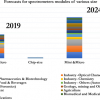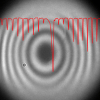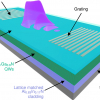VTT Technical Research Centre of Finland has developed a miniature gas sensor that can be connected to mobile devices. Gas measurements made with smartphones will make activities such as the detection of internal air problems easier. In addition, sleep quality will be measurable with greater precision, using mobile healthcare applications which gauge carbon dioxide quantities.
Many sensor developers are interested in using smartphones to measure gas concentrations. “This is probably due to the spread of the Internet of Things (IoT), which enables indirect observations of a range of environmental factors based on data gathered from single sensors or sensor networks. Many day-to-day issues, such as precision and efficiency in the workplace, can depend on carbon dioxide levels and internal air quality”, says Anna Rissanen, leader of the VTT research team.
Using a mobile device to measure carbon dioxide will also enable new applications for smartphones: for example, sleep quality can be monitored by measuring the sleeper’s breath.
The miniaturised gas sensor is based on Fabry–Pérot interferometers (FPI). Over the years, VTT has developed these for various spectroscopy-based applications, such as hyperspectral cameras for nanosatellite- and drone-based environmental monitoring, the early detection of skin cancer and fuel analysis for emission minimisation. The gas sensor developed by team’s senior scientist Rami Mannila is based on channelling light through the sample being analysed. Penetrability at various light wavelengths can be used to determine the composition of the compound. Carbon dioxide is identified based on its strong absorption of light at a wavelength of 4.2 µm. In addition, a corresponding sensor technology can be used to simultaneously differentiate and detect other gases or substances based on the spectrum of their absorption peaks at various infrared wavelengths.












